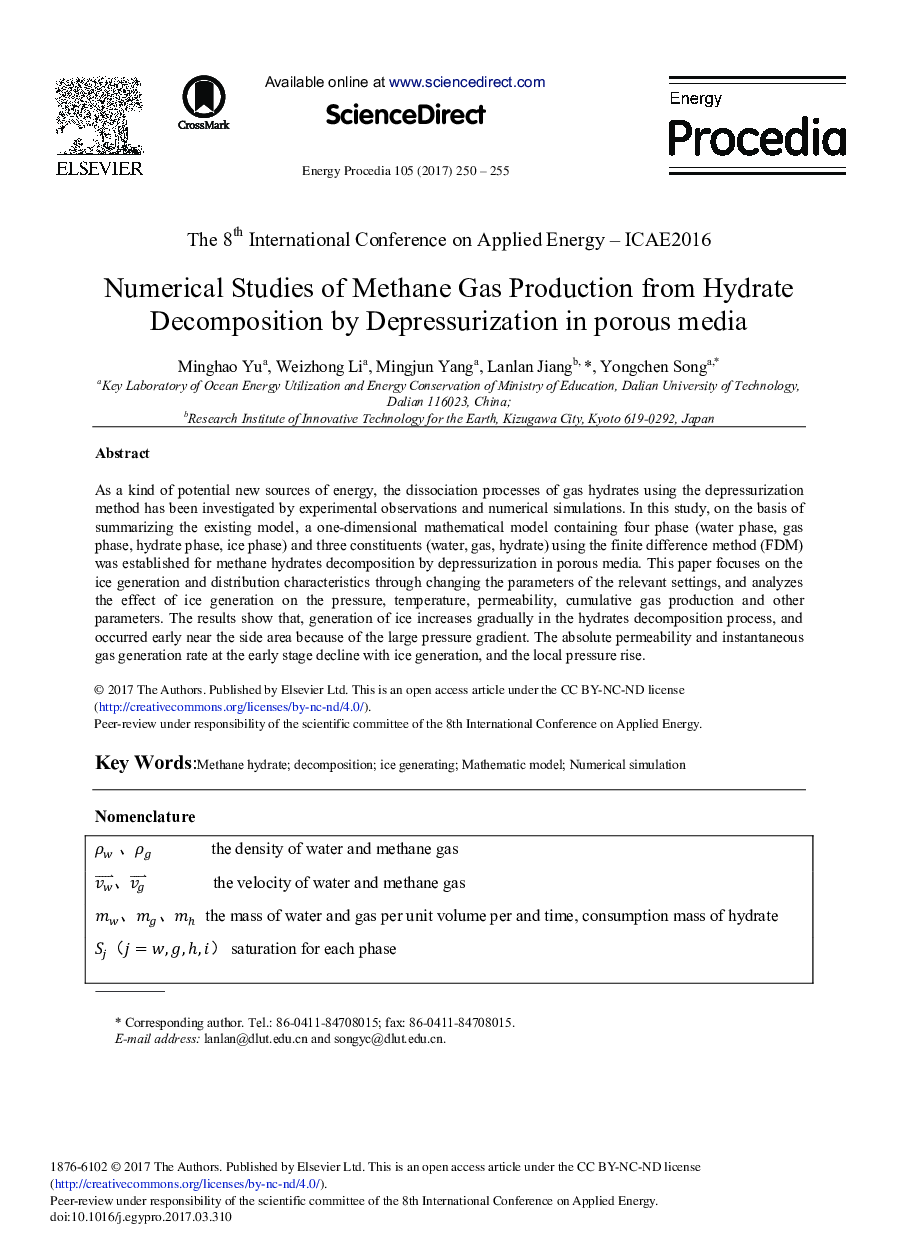| Article ID | Journal | Published Year | Pages | File Type |
|---|---|---|---|---|
| 5446262 | Energy Procedia | 2017 | 6 Pages |
As a kind of potential new sources of energy, the dissociation processes of gas hydrates using the depressurization method has been investigated by experimental observations and numerical simulations. In this study, on the basis of summarizing the existing model, a one-dimensional mathematical model containing four phase (water phase, gas phase, hydrate phase, ice phase) and three constituents (water, gas, hydrate) using the finite difference method (FDM) was established for methane hydrates decomposition by depressurization in porous media. This paper focuses on the ice generation and distribution characteristics through changing the parameters of the relevant settings, and analyzes the effect of ice generation on the pressure, temperature, permeability, cumulative gas production and other parameters. The results show that, generation of ice increases gradually in the hydrates decomposition process, and occurred early near the side area because of the large pressure gradient. The absolute permeability and instantaneous gas generation rate at the early stage decline with ice generation, and the local pressure rise.
